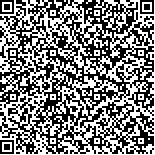| 摘要: |
| 为应用国产高空间分辨率影像快速、准确估算丘陵区柠檬种植面积,文章基于GF 1 PMS影像使用不同数据预处理及分类法估算柠檬种植面积。通过对影像进行大气校正、数据融合、滤波等处理,分别得到光谱反射率数据、融合影像和纹理特征数据(分辨率分别为8m、2m、2m)。通过可分离性分析,发现荒草地和未成林柠檬的可分性最差,二者在光谱反射率数据、融合影像和纹理图像中的可分性数值均小于18,是影响柠檬分类精度的主要因素。基于最大似然法的分类精度评价结果显示,纹理图像数据估算精度好于8m分辨率的多光谱反射率数据和2m分辨率的融合图像,适当的影像预处理有助于提高监督分类精度。对比基于最大似然法的精度,基于面向对象法的柠檬面积估算精度达9509%,高于监督分类法的,使用GF 1 PMS影像估算柠檬面积最优方法为面向对象法。该研究为应用国产高分辨率遥感数据快速、准确估算丘陵地区果树种植面积提供了相关参考。 |
| 关键词: GF-1 PMS影像 柠檬 丘陵 种植面积 精度 |
| DOI:10.7621/cjarrp.1005-9121.20161108 |
| 分类号: |
| 基金项目: |
|
| ESTIMATION OF LEMON PLANTED AREA BASED ON GF 1 PMS IMAGE |
|
Jiang Yi, Li Zongnan, Ren Guoye, Wang Xin, Li Zhangcheng
|
|
Institute of Remote Sensing Application,Sichuan Academy of Agricultural Sciences,Chengdu 610066,China
|
| Abstract: |
| Lemon has good economic value. The most important growing region of lemon in China is in Anyue county Sichuan province, where the lemon planting and processing has become an important characteristic industry. Accurate spatial information of lemon planting is dispensable for lemon management. High-resolution remote sensing is an efficient technology in agricultural information. This study aims to find an optimum method of estimating lemon acreage base on GF-1 PMS image which drives from the first satellite of high resolution remotely sensed project in China. Three preprocessing included atmospheric correction, data fusion and texture filtering were employed, and two classifications were compared in this paper. After preprocessing, three images included 8 m spectral reflectance image, 2 m fusion image and 2 m texture image were produced. Then the separability between lemon and other interest categories were evaluated using algorithms of Jeffries-Matusita distance and Transformed divergence. The result showed that the separability between weed field and immature lemon in spectral reflectance image, fusion image and texture image was 1.613, 1.441 and 1.547, respectively, which was the worst in all interest categories. The values less than 1.8 meant that it was hard to accurately classify weed field and immature lemon. Therefore, weed field was the main factor influencing the estimated accuracy of lemon planting area. By classify 8 interest categories using the algorithm of maximum likelihood base on the three images, it showed that the precision (which resultant accuracy of classification was up to 98.05%, the Kappa coefficient was up to 0.9766, and the accuracy of lemon planting area was 88.42%.) based on texture image was better than the multi-spectral reflectance image and the fusion image. Appropriate image preprocessing can improve the classification precision of lemon up to 95.09% using the maximum algorithm. Compared with the result of supervised classification, the accuracy of object-oriented approach was higher than the former in estimation of lemon planting area. Accordingly, object-oriented approach was the better method to estimate the lemon planting area using the GF-1 PMS image. The application of high resolution remote sensing data provided references for estimating fruit tree planting in the hilly area quickly and accurately. |
| Key words: GF 1 PMS image lemon hills planted area precision |

